(177183 products available)



















































































































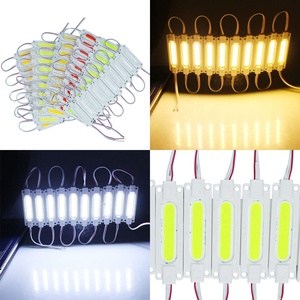










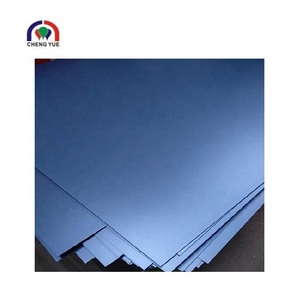


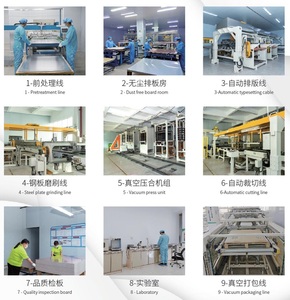
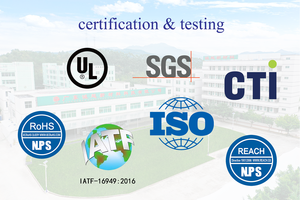



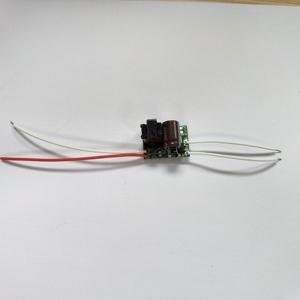


































The 1 led pcb can be found in different types. Here are some of them:
Flexible LED PCBs
Flexible PCBs are created from a circuit board material that is flexible. Because of this feature, it’s possible to install the boards on irregularly shaped surfaces or areas with limited space. Flexible LED PCBs are good for applications where the device is expected to often change shape or bend. Common uses of such boards are in automotive lighting, wearables, and light strips.
Metal Core PCBs (MCPCB)
MCPCBs are designed to conduct heat well. This makes them ideal where LEDs generate a lot of heat. These boards have a metal base (usually aluminum) that helps dissipate the heat from the LED to avoid damage or decrease LED functioning. MCPCs are widely used in high-power LED lighting, medical devices, and automotive applications where good thermal stability is required.
Single-Layer LED PCBs
These are the simplest types of LED PCBs, having all electrical components on only one side of the board. Single-layer LED PCBs are easy to install and are very cheap to produce. They are commonly used in basic applications such as indicators, simple lighting, and small electronic devices where the functions required don't need much complexity.
Double-Layer LED PCBs
These LED PCBs have layers on both sides of the board, giving more design flexibility and component density. The two layers offer complex circuits, which are ideal for more complicated lighting systems. Double-layer LED PCBs can be found in commercial and industrial lighting systems, where high brightness and effective energy work are important.
High-Density Interconnection PCBs (HDI)
These PCBs are made with more layers and small features like micro vias and blind/buried vias. The complex structure helps accommodate high circuit densities. HDI PCBs are suitable for advanced applications and compact devices that require intricate LED lighting arrangements, such as smartphones, tablets, and other portable gadgets.
The 1 LED PCB is made from various materials. They include:
Alumina substrate
Alumina, commonly known as aluminum oxide or simply by its chemical name, is a ceramic material that comes highly regarded for its excellent thermal conductivity and electrical insulation properties. These two features make it ideal for LED applications, where heat dissipation is vital for maintaining the performance and longevity of the light-emitting diodes. In addition to its effective heat management capabilities, alumina is exceptionally durable, with high resistance to chemical reactions and mechanical damage such as impacts, abrasion, or pressure. Its combination of thermal efficiency, chemical resistance, and mechanical strength not only ensures efficient LED operation but also helps mitigate risks associated with environmental contaminants or physical wear, leading to increased reliability and lifespan for devices employing LEDs on alumina substrates.
Copper substrate
Copper substrates are prized for their superior thermal conductivity, making them fit for LED applications requiring premium heat dissipation. This feature is critical for safeguarding the LEDs from overheating and thus improving energy efficiency and longevity. Apart from its outstanding thermal properties, copper is also very durable and resists mechanical damage, including bending, breaking, and other forms of impact. Its durability and versatility make it one of the best choices for engineering highly reliable LED assemblies. Copper substrates also allow for complex circuit designs, which leads to more functionality within a compact space. Thus, this material is perfect for high-performance electronic devices demanding efficient thermal management and robust build quality.
Polyimide substrate
Polyimides are high-performance organic plastics that have excellent thermal stability and flexibility. They can maintain their mechanical and electrical properties at temperatures over 300 °C, which makes them ideal for applications in thermal environments. Their flexibility allows them to be used in flexible circuit boards. These boards can bend or fold while still functioning effectively. In addition, polyimides provide good electrical insulation, plus they are resistant to many chemicals and radiation. This results in a combination that offers durability and adaptability for high-tech devices in aerospace, electronics, and other industrial applications where performance and reliability are critical.
Silicone adhesive
Silicone adhesives are super heat-resistant. They can retain adhesive properties from temperatures below -50 °C to over 200 °C. Silicone is also resistant to UV light, moisture, and chemical exposure. Because of this, it's very effective in outside applications or in conditions that may break down most other adhesives. One of its notable features is elasticity. Silicone adhesives maintain a bond even in situations where there’s movement, vibration, or thermal expansion. This makes them widely used in engineering applications where a combination of versatility, durability, and resistance is required to deal with different stress factors.
The led circuit board has various commercial values and uses. Here are some of them:
Lighting Solutions
Inscribed with flexibility and efficiency, LED PCBs serve a critical function in lighting across the spectrum, from mere homes to massive commercial structures. They allow energy-saving LED bulbs that carry a significantly lower heat output, extending not just the lifespan of the bulb but the safety where it's installed and an efficient energy bill. As global methods and practices lean towards sustainability, the demand for LED PCB lighting solutions is set to rise, increasing their commercial value.
Consumer Electronics
LED PCBs are affixed in televisions, monitors, and displays to enhance image quality and provide backlighting. In mobile devices, they provide indicators or flashlight functionalities. The incessant demand for quality visual devices propels the need for advanced LED PCBs, thus augmenting their commercial worth.
Automotive Applications
Automotive sectors pioneered the use of LED PCBs for positioning, turn signals, and interior lighting. The push for safer, energy-efficient vehicles means LED lighting. They are a requisite feature, providing the board an elevated value, especially in auto markets.
Medical Equipment
Bright, reliable lighting is indispensable in medical equipment like surgical lights and diagnostic devices. LED PCBs meet this need and provide a non-invasive, low-heat light source for sensitive medical environments. The required precision in medical applications ensures a great demand and value for these PCBs in the healthcare industry.
Signage and Displays
Businesses employ LED PCBs for their illuminated signage, advertising displays, and digital billboards due to their visibility and low energy consumption. As digital advertising increases, so does the demand for quality LED PCBs, hence boosting their commercial value.
Backlighting in Displays
LED PCBs are used widely for backlighting in various display technologies like LCD TVs, computer monitors, and mobile phones. They offer superior brightness and even lighting over their predecessors, plus they consume less energy. Given the increasing demand for consumer electronics, the need for quality LED PCBs for effective backlighting enhances their commercial value in this industry.
Here are some of the key things that business owners should consider when choosing small led pcbs:
Type
As mentioned earlier, there are many kinds of LED PCBs. Business owners should stock those suitable for their customers' diverse needs. For instance, those who intend to use the PCB for signage will need a metal-based PCB because it bears the heat well. At the same time, those who use flexible lighting will need flexible LED circuit boards.
Materials
Electronic buyers should also consider the material making the 1 LED PCB. Each material has its benefits and disadvantages. For instance, a copper substrate has great thermal conductivity. The great thing about PCBS made from other materials is that they are very durable. They, therefore, can easily resist mechanical damage.
Thermal Management
They should also look at the thermal management properties of the PCB. An effective thermal management system will keep the LED at an optimal level. When selecting this feature, buyers should consider the power of the LED. Higher-power LEDs require more advanced thermal management features, such as heat sinks or thermal pads.
Adhesive bonding
In most cases, PCB designers will bond the LED to the PCB using adhesives. Business owners should understand the various types of adhesive bonding. The most common types are thermoset and thermoplastic bonding. The bond between the PCB and the LED will usually affect the LED's thermal characteristics.
Application
The type of application the PCB will be used in will highly affect the choice of PCB. Buyers should consider the environment the PCB will be used in. For instance, high-humidity or high-temperature environments will require a PCB with an excellent moisture or heat barrier. In addition, PCBs meant for outdoor applications should have good UV protection.
Budget fixed
Finally, business owners should consider the budget of their potential customers. When starting, they should get PCBs that have moderate prices. As they grow their customer base or if they intend to stock PCBs for a niche market, they can gradually get high-end PCBs.
It's a circuit board designed with one highly efficient LED. It finds applications in signage, indicator lights, displays, and automotive lighting. Its compact structure allows versatility in various electronic devices and systems where space is at a premium. It offers bright illumination while consuming less power than traditional lighting.
One main benefit of using this PCB is efficient heat dissipation. This makes it ideal for high-performance LED applications. The other benefit is design flexibility. PCBs can be easily customized to fit various shapes and sizes. This makes them suitable for both compact devices and larger systems. The PCB also has great durability. The LED is integrated into the PCB. This offers increased protection to the LED. Lastly, the PCBs are cost-effective. The improved thermal management ensures longer LED lifespan. This reduces the maintenance frequency and costs in the long term.
One of the main disadvantages of using this PCB is high initial cost. Manufacturing these PCBs is expensive compared to traditional lighting methods. Another disadvantage is limited flexibility. Most of the PCBs are rigid. This makes them unsuitable for applications requiring flexible lighting solutions. Additionally, high power can damage the LED. Excessive power can lead to overheating and failure. Therefore, businesses should educate their customers on the power requirements of these PCBs.
Buyers should consider the material of the PCB. Copper PCBs offer great thermal conductivity. They are suitable for high-power applications. On the other hand, aluminum PCBs are budget-friendly. But they are not as efficient as copper in heat dissipation. The usage of the PCB is another factor to consider. The intended application will define the type of PCB to go for. They should also think about the thermal management features of the PCB.